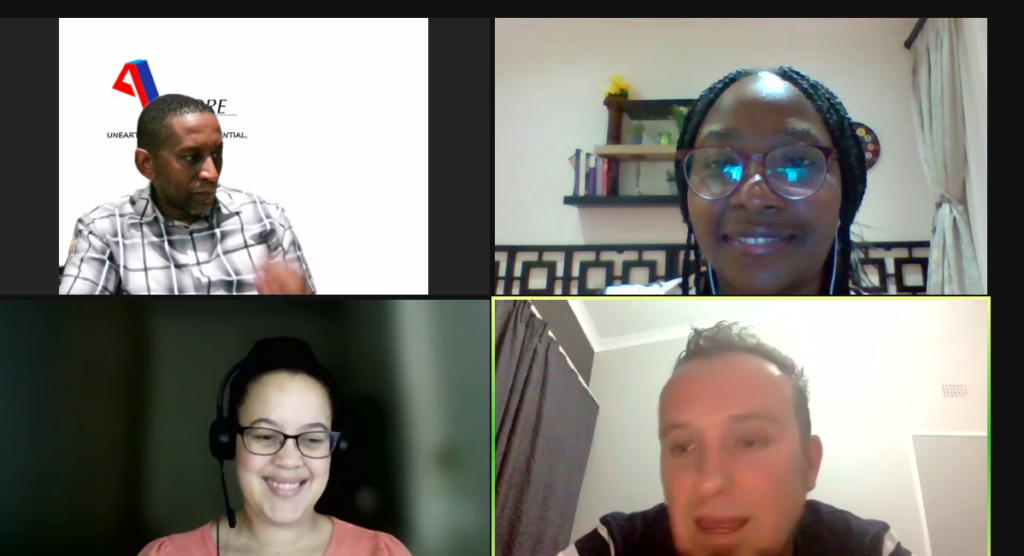Self-directed teams is something we needed to look at to be sustainable and scalable, says Ruth.
Self-directed teams, also known as self-managing teams, self-regulating teams, or autonomous teams, are gaining popularity in organisations. They are often set up because it has been found that they are linked to, among other things, increased productivity, job satisfaction, and organisational commitment.
In a Community Conversation sponsored by Workday, SilverBridge’s chief wellness officer Ruth Wotela shared their journey of completely doing away with line managers and creating self-directed teams.
Like many other organisations, over the past almost two years, SilverBridge went through the process of looking at the way they worked. This included where they work, what they do and how they organise themselves, and this is where the conversation began around how they should think about being sustainable and scalable.
“As a technology company, when Covid-19 hit we were in a space where we were seeing an increase in demand for what we do in terms of helping companies. Although that was great, it put a lot of pressure on our business.
“Last year, the organisation went through a huge recruitment drive. This is largely because of the demand of what we do, and the products and the services that we offer to our customers. This resulted in a need to really look at how the company was growing, because we ended up in situations where our teams were very large and you would have a team of 18 with one manager.”
Ruth said this was difficult, especially for new people joining the company. “We found that new people were really struggling to learn and upskill and gain experience,” she said. We realised that we needed to have a structure that provides broader access to the experience and the expertise that sits across the organisation.”
Implementation
“Given our way of working, we realised that self-directed teams were something that we should look at, in order to help us be sustainable and scalable,” she explained.
“The organisation did a lot of research on this and we looked at how companies in similar industries work with this. What are other companies doing out there? What makes sense? What are we trying to achieve?
“There were a lot of conversations and planning that went into this process and this is a journey that started a while ago, but we only got to implement it in September 2021.”
The solution for SilverBridge was not to go and appoint many people to manage the teams, shared Ruth. “We needed to think of how we could make the best with the people that we have, and focus on doing things that would benefit our people and possibly give them an opportunity to learn and to develop.”
She outlined some of the characteristics that define self directed teams:
- No managerial control
- High level of trust
- Common goal
- Shared responsibility of tasks
- Accountability for output
- Authority to make decisions
“Research also showed some of the benefits of self-directed teams. The main one is the increased efficiency and productivity,” she said. “Teams are able to find opportunities and solutions quicker because they don't have to wait for approval or go through red tape for them to take the next step.
“The others include increased employee engagement, satisfaction and commitment. There were also a couple of companies that talked about how they work with self directed teams in a way that gives opportunities for people to rotate in different roles either within the same team or in other teams across the organisation,” added Ruth.
This all contributes to enabling teams to really be innovative in how they work and share knowledge, she said. There's also a lot of research now that shows that the younger workforce is very much interested in developing expertise rather than rising through the ranks.
Outcomes and lessons learnt
Ruth said they can already see a couple of results they were hoping for. “The first thing is that our culture and our way of working enabled this to be an easy transition. There’s a lot that we’ve learned, and that we’ll continue to learn,” she said. “We keep highlighting to our people that we need to support and encourage each other in this process as no one knows exactly how this should work. It’s a learning process and a learning journey for everyone.
“We’ve already started to see the efficiency in working with smaller teams. The fact that they're in a smaller team has helped us to upskill quicker. In some aspects, there’s been much quicker decision-making, where people don’t need to go through a manager and the manager needs to escalate it to exco.”
There’s also increased and easy access to expertise across the organisation, and communication and collaboration have increased.
“We can already see that this is something that is more sustainable, looking at the learning, and the level of responsibility and accountability that has taken place,” she added. “This really supports our strategy as an organisation.”
There are a few things that still require a lot of focus. “I think one big thing is continuous conversations around enabling the shift in the mindset and our way of working, and for some employees, there's a lot of coaching, support and assistance to encourage them to step up and take on more responsibility.
“We've seen that we need to continue to provide support for the development of leadership skills as well,” she concluded.











